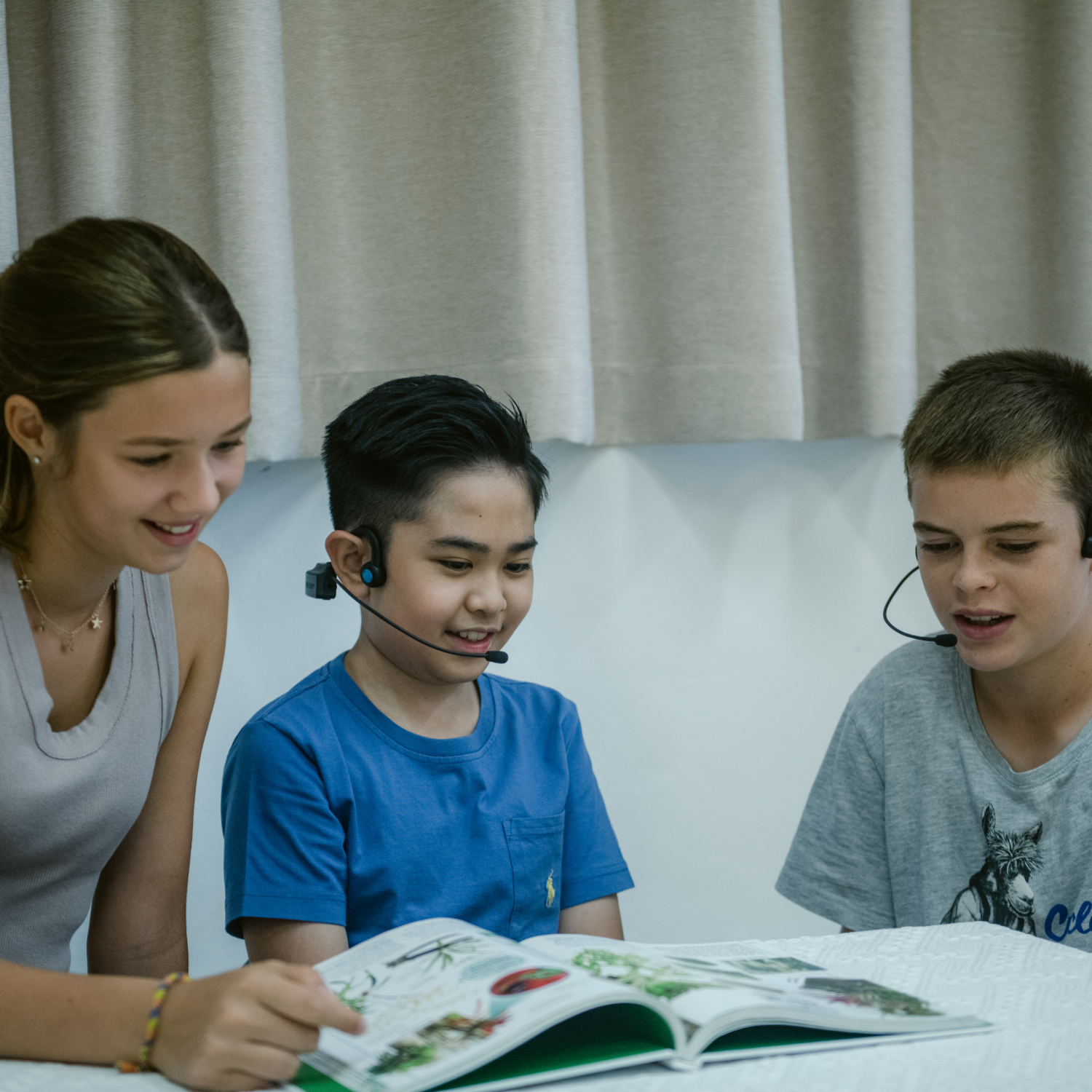Dyslexia and Writing: Does Dyslexia Affect Writing?
 Amanda Unrau - October 04, 2023
Amanda Unrau - October 04, 2023 
The Relation between Dyslexia and Writing | Writing Challenges for Individuals with Dyslexia | How Do Dyslexics Write | Dyslexia Writing Strategies | Using Forbrain
Yes, dyslexia does affect writing. Reading (decoding) and writing (encoding) are closely related, so reading difficulties in those with dyslexia means related writing difficulties. Writing consists of the act of writing (transcription), working memory, and executive function. Individuals with dyslexia may experience deficits in any or all of these areas, which leads to poor writing. In this article we will discuss the cause of writing difficulties for dyslexic individuals, the specific writing challenges they experience, and strategies to help improve writing skills.
The Relation between Dyslexia and Writing
It is widely known that dyslexia negatively impacts an individual’s reading skills. Besides reading difficulties, individuals with dyslexia also have difficulty with writing tasks. This may be attributed to poor executive function and working memory.
Executive function is needed in writing in order to plan, organize, self-regulate, self-monitor, inhibit unnecessary information, and make changes and corrections. Poor executive function skills in those with dyslexia can impact spelling, handwriting, and the overall content and structure of a writing sample.
Working memory is also necessary for effective writing. Working memory consists of the central executive, phonological loop, and the visuospatial sketchpad. A deficit in any of these areas can negatively impact writing skills. A deficit in the phonological loop makes it difficult to spell words and write sentences. A deficit in the visuospatial sketchpad makes it hard to remember the correct sequence of letters in words.
Writing Challenges for Individuals with Dyslexia
Writing challenges for individuals with dyslexia can manifest in a number of ways. Writing includes both the writing process and the written product. The writing process consists of the planning, organization, writing, revising, and editing for a specific audience and a specific purpose. The written product is the end result of the writing process. Challenges in writing show up in both of these writing components.
Grammar and syntax
Most individuals are able to absorb and learn grammar rules through reading, but since people with dyslexia have difficulty reading, they are often unable to do this. Because of this, their writing will likely have grammatical errors, such as sentences written out of order, lack of appropriate verb endings (e.g., -ing, -ed), or missing pronouns. Punctuation
Most punctuation may be missing or incorrect. Dyslexic individuals will often not capitalize proper nouns or the first letter in a sentence. Sentences may all seem to blend together since periods and commas are often left out.
Handwriting
The handwriting of individuals with dyslexia is often difficult to read. While it was thought that poor motor control caused handwriting difficulties. However, poor spelling skills may also be the cause. When individuals don’t know what letter to write next, they hesitate, leading to less fluent writing and poor handwriting. It will often take these individuals a significant amount of time to formulate letters and words and finish writing tasks.
Sentence structure
Appropriate sentence structure may be lacking so that a passage written by someone with dyslexia may be written in just a few long run-on sentences. Sentences may also be written out of order. For example, instead of subject + verb + object (She bakes cookies), a sentence could be written as subject + object + verb (She cookies bake).
Poor Organization
Dyslexic individuals may have poor executive function skills. This means that they have difficulty developing a plan for their writing. Their ideas may not be fully developed and the overall writing will likely be disorganized. Their writing may go from one topic to the next abruptly or be out of order.
Lack of Diverse Vocabulary
Individuals with dyslexia tend to have a limited vocabulary. Since they struggle with reading, they lack the comprehension of what they read. They are unable to gain a robust vocabulary, which will be reflected in their writing. In addition, since it takes so much time and effort to write and compose the final product, they are less likely to focus on using a variety of words or more advanced vocabulary.
How Do Dyslexics Write
Individuals with dyslexia approach writing in different ways than those without dyslexia. Difficulty with transcription skills is seen in the way they write. Those with dyslexia may form letters in unusual ways, such as starting an uppercase or lowercase L on the bottom of the line instead of the top. Letters may also extend above the top or below the bottom of the line. Handwriting skills may decline as the writing progresses.
Working memory deficits can cause some of these writing difficulties. Individuals may spell a word correctly the first time they use it in a written passage, and incorrectly the next time. They may also have a hard time remembering the information or words they want to write. More resources are needed to remember how to form letters and spell words, which takes away from the memory available for retaining ideas and plans during the writing process.
Executive function difficulties also come into play in order to plan, organize, and express their ideas. These individuals often do not monitor their writing as they go, or revise and edit it afterwards.
Dyslexia Writing Strategies
There are several approaches that can be used to help individuals with dyslexia improve their writing skills. Take note of the difficulties and errors present in your child’s or student’s writing to help decide which approach to use. It may be most effective to use multiple techniques.
Structured Writing Approaches
Text structure instruction teaches individuals the five basic text structures: description, compare/contrast, sequence, cause/effect, and problem/solution.
This approach provides an organizational structure for dyslexic individuals. This simplifies the writing process because they can choose the structure that they need for their specific writing purpose. A great way to practice is to give the individual the content, so that they do not have to come up with the ideas, vocabulary, and correct spelling. This allows individuals to focus on learning and using the necessary organizational structure.
Sentence Combining
Sentence combining teaches individuals to take two or more simple sentences and combine them into one complex sentence.
Here is an example:
Sentence 1: He has a dog.
Sentence 2: The dog is brown.
Sentence 3: The dog’s paws are big.
Combined sentence: He has a brown dog with big paws.
Since the simple sentences are given to the individual, this approach reduces their cognitive load. They do not need to come up with the ideas, vocabulary, or spelling on their own. It is a great way to help the individual learn to find out how ideas go together, which helps them plan and write better sentences.
Sentence combining also can be used to improve vocabulary and teach grammatical structures.
Self-Regulated Strategy Development
Self-Regulated Strategy Development (SRSD) is an approach that teaches children to self-regulate. This intervention targets executive functions skills that are often weak in those with dyslexia, including self-regulation, setting goals, and self-monitoring.
Dyslexia individuals learn to define the problem, focus on making a plan and improving attention, write, correct errors, and evaluate oneself. These strategies are taught in six steps: develop background knowledge, discuss this knowledge, model it, memorize it, support it, and perform independently. All of these strategies help to both reduce the demands of executive function skills and improve these same skills. The process of writing becomes more manageable because it is broken down into sequential steps. It also allows the individual with dyslexia to focus specifically on producing the content.
Use assistive technology
Assistive technology can be used to improve handwriting skills. Apps on tablets can provide opportunities for individuals to practice tracing letters. An advantage of technology is that it can give instant feedback.
Other assistive devices, such as big pencils with grips or paper with raised lines, can also be used. Accommodations such as spellcheck or voice-to-text software are options that reduce stress and allow individuals to demonstrate their knowledge and skills in other ways.
Provide support at home and classroom
At home, the family of the individual with dyslexia can provide ways to practice writing through games or other activities. The teacher and family should collaborate to find out the approach that works best for the individual so that they can be supported at home and school. In the classroom, a student may need accommodations, such as extended time to complete writing tasks, a list of sight words or common words to reference when writing, and assistive technology, such as speech-to-text or typing options.
Using Forbrain to Help with Writing and Dyslexia
Forbrain is an additional tool that can be used to help support the writing skills of individuals with dyslexia. Forbrain is an auditory stimulation headset that amplifies an individual’s own speech. Dyslexic individuals have difficulty interpreting and understanding written language, and Forbrain improves one’s ability to process and remember what they say or read aloud. This can help as they are planning and organizing their writing.
Final Words
As you can see, dyslexia does affect writing. These writing difficulties can present in a variety of ways. Thankfully there are multiple interventions that can be used to help those with dyslexia improve their writing skills. Parents and educators can use the strategies discussed above to help individuals with dyslexia learn better.
References
American Speech-Language-Hearing Association. (Accessed 2023, September 27). Disorders of Reading and Writing. ASHA. https://www.asha.org/Practice-Portal/Clinical-Topics/Written-Language-Disorders/Disorders-of-Reading-and-Writing/
American Speech-Language-Hearing Association. (Accessed 2023, October 6). Written Language Disorders. ASHA. https://www.asha.org/Practice-Portal/Clinical-Topics/Written-Language-Disorders/#collapse_6
Bailey, Eileen. How Dyslexia Impacts Writing Skils. (2018, June 11). ThoughtCo. https://www.thoughtco.com/how-dyslexia-impacts-writing-skills-3111195
Chung, P.J., Patel, D.R., & Nizami, I. (2020, February 22). Disorder of Written Expression and Dysgraphia: Definition, Diagnosis, and Management. Translational Pediatrics, 9(1), S46-S54. https://doi.org/10.21037/tp.2019.11.01
Kearns, D.M., Hayes, J. B., Bazis, P., & Cooper, S. (2018). Why Children with Dyslexia Struggle with Writing and How to Help Them. Language, Speech, and Hearing Services in Schools. 843-868.49(4), https://doi.org/10.1044/2018_LSHSS-DYSLC-18-0024





